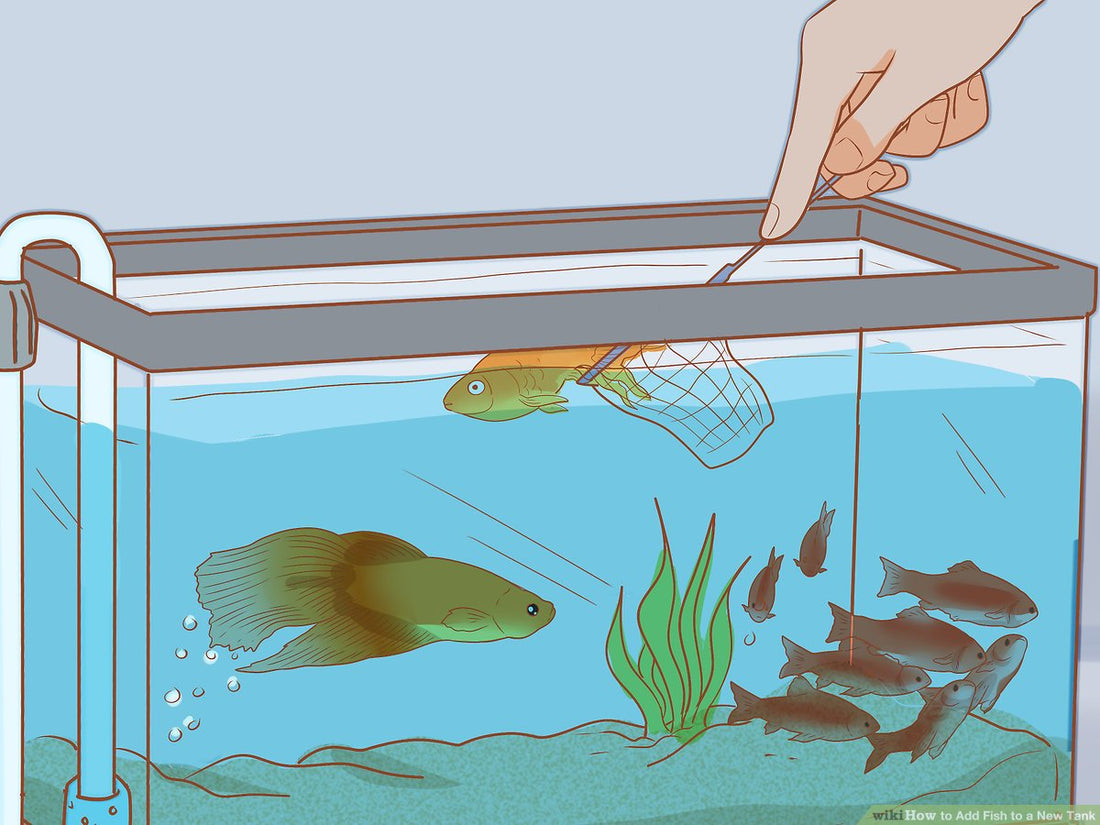
How to cycle an aquarium: fishless and fish-in methods for a freshwater aquarium.
Share
Cycling an aquarium is a critical step in establishing a healthy aquatic environment for your fish and other inhabitants. In the cycling process, beneficial bacteria establish colonies in the tank, which convert toxic ammonia into less harmful nitrites and then into nitrates. In this article, we'll cover both the fishless and fish-in cycling methods for a freshwater aquarium.
Fishless Cycling Method
The fishless cycling method involves adding a source of ammonia to the aquarium without any fish. This method is preferable because it avoids subjecting fish to harmful levels of ammonia and nitrite during the cycling process. Here are the steps to follow for a fishless cycle:
-
Set up the tank with water, substrate, and any decorations or plants.
-
Add a source of ammonia to the tank. You can use pure ammonia or fish food. If using fish food, add a small amount each day to the tank to provide a continuous source of ammonia.
-
Test the water daily for ammonia, nitrite, and nitrate levels. You can use test strips or liquid test kits to monitor the levels.
-
After a few days, you should start to see the ammonia levels rise. The beneficial bacteria will start to grow and convert the ammonia to nitrites.
-
As the nitrites start to rise, the beneficial bacteria will start to convert them into nitrates.
-
Keep testing the water daily until ammonia and nitrite levels drop to zero. This can take several weeks.
-
Once the ammonia and nitrite levels drop to zero, you can do a partial water change to lower the nitrate levels.
-
Your tank is now cycled and ready for fish.
Fish-In Cycling Method
The fish-in cycling method involves adding fish to the tank during the cycling process. This method is not recommended because it can expose fish to harmful levels of ammonia and nitrite, which can cause stress and illness. However, if you choose to use the fish-in cycling method, here are the steps to follow:
-
Set up the tank with water, substrate, and any decorations or plants.
-
Add a few hardy fish to the tank. These should be fish that are tolerant of high levels of ammonia and nitrite, such as zebra danios or guppies.
-
Test the water daily for ammonia, nitrite, and nitrate levels. You can use test strips or liquid test kits to monitor the levels.
-
As the fish produce waste, the beneficial bacteria will start to grow and convert the ammonia to nitrites.
-
As the nitrites start to rise, the beneficial bacteria will start to convert them into nitrates.
-
Keep testing the water daily until ammonia and nitrite levels drop to zero. This can take several weeks.
-
Once the ammonia and nitrite levels drop to zero, you can do a partial water change to lower the nitrate levels.
-
Your tank is now cycled and ready for additional fish.
Conclusion
Cycling an aquarium is an essential step in creating a healthy environment for your fish and other aquatic inhabitants. Both the fishless and fish-in cycling methods can be used for a freshwater aquarium. However, the fishless cycling method is the preferred method because it avoids exposing fish to harmful levels of ammonia and nitrite. By following the steps outlined in this article, you can successfully cycle your freshwater aquarium and enjoy a thriving aquatic environment for your fish.

